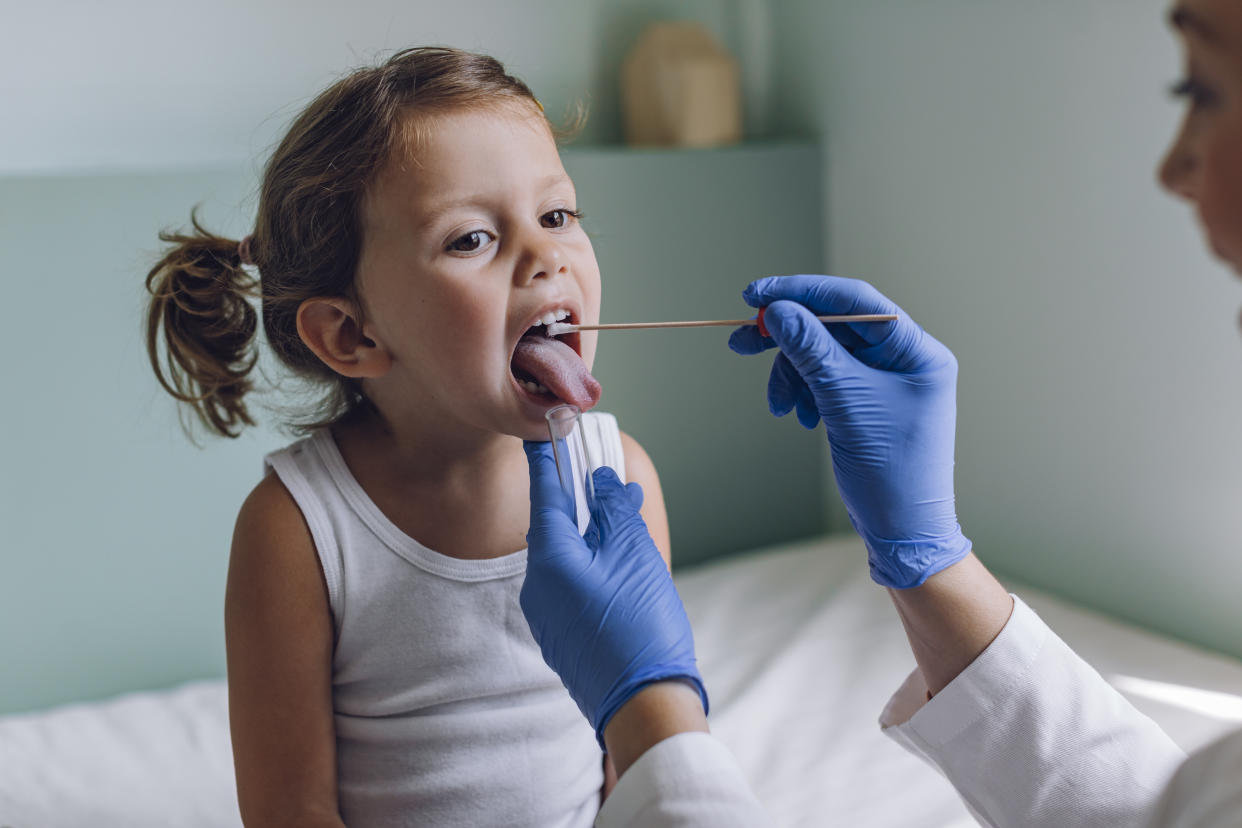How to swab a baby, toddler or child for coronavirus at home

With the coronavirus’ dreaded second wave now well underway in the UK, testing is as important as ever.
Knowing you have the infection enables patients to isolate and warn those they have spent time with to get swabbed, helping to stem the spread of the virus.
With children back at school after months out of the classroom, many are concerned outbreaks could occur among pupils. While it is unlikely they will become seriously ill, children could pass the infection to vulnerable grandparents.
Anyone with the coronavirus’ tell-tale fever, cough, or loss of taste or smell is encouraged to get tested for free on the NHS. While suspected patients can go to a test site, at-home swabs can also be ordered if the individual is unable to travel.
Read more: One in 10 critically ill COVID patients has a cardiac arrest
The NHS stresses those aged 11 or under should have the swab performed for them. While generally considered painless, children are unlikely to take well to a long cotton bud being put up their nose or down their throat.
An expert has therefore shared her top tips on how to test a young child for the coronavirus.

How to perform a self swab at home
Regardless of a person’s age, anyone performing a swab should first wash their hands thoroughly or use a sanitiser made up of at least 60% alcohol.
A “deep swab” is required of both the nose and throat using the same cotton bud.
“The idea is to get the cotton tip on both tonsils and then right to the back of your nose,” said a medic from Barts Health NHS Trust, London.
“If it’s a properly taken swab, you should gag.”
Read more: UK coronavirus cases exceeding April's 'peak' – why are deaths low?
When it comes to the nose, the medic stressed the swab should be “pushed back as far as it can go until you hit resistance and then turned around”. Repeat with the other nostril.
He added it is normal to “tear up” during the nasal swab.
The bud should then be lowered into an upright sample container and broken at the “snap off” point.
Watch: How to do a coronavirus self-swab test
Tips on swabbing young children
A coronavirus swab is generally considered uncomfortable.
For children who are old enough to understand, explain how important it is they are tested amid the pandemic.
“Having an honest and age-appropriate conversation about what is happening and whether they have any worries can help manage anxieties and show younger children talking about their feelings is okay,” Emma Selby, a nurse who specialises in child mental health, told Yahoo UK.
“Otherwise, they might fill in the gaps with their own imagination, and become overwhelmed and scared if they need a test.”
Selby – who is also clinical lead for the AI mental health app Wysa – recommends parents and guardians performing the test first have a “health meeting” with the child.
Read more: Vitamin D linked to reduced risk of coronavirus death
“Use diagrams or educational videos to explain what the virus is, how it spreads, and how we’re looking after our health and our loved ones by having a test,” she said.
“By being honest, linking the test back to people they know and care about, and positioning the swab as something they are doing to look after them, you can make them feel empowered about taking a test rather than afraid.”
For toddlers and babies, Selby advises turning the swab “into a game and distracting them with other sensory stimulants such as lights, bubbles and noises”.
“This will help calm your child and make a positive connection with the swab,” she said.
“Also, it can be helpful to have a drink on hand for afterwards to help clear your child’s throat or a well done treat such as a biscuit or their favourite toy.”
Watch: UK coronavirus cases high but deaths low - why?




